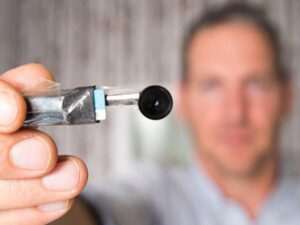
Fighting abuse using covert video: A chat with Videre’s Oren Yakobovich
Videre works to equip local activists in conflict zones with the technology and training to capture compelling visual evidence of
Tech Matters is a nonprofit organization utilizing the power of tech to support social sector innovators and promote large-scale social change.
Jim Fruchterman of Tech Matters spoke with Skyler Reid on February 23, 2023. Click here to read the full conversation with insights highlighted.
Skyler Reid: If you wouldn’t mind introducing yourself and describing the problem that you’re addressing with your work and how you’re responding to that problem?
Jim Fruchterman: I’m Jim Fruchterman. I’m the founder of Tech Matters, as well as the Skoll Award-winning nonprofit, Benetech.
The problem that we’re addressing at Tech Matters is that great technology rarely gets to 95% of humanity because they don’t have enough money to interest most of my friends in Silicon Valley, with a few exceptions. Mobile phones are pretty widely distributed. But by and large, if you say, “I want to do something wonderful in Zimbabwe,” people’ll say, “Not with my investment.” The problem we’re solving is, what if all the people working on the most important social problems had the same quality tools that restaurants and dentists have?
Skyler Reid: How do you engage with that problem? How do you approach it?
Jim Fruchterman: Our playbook is the standard Silicon Valley startup tech company playbook, but where we’re focusing on maximum social impact instead of maximum money. We put the users at the center, just like you should if you’re trying to make money off of them. We found out what they’re doing, how we can solve a major problem for them.
Because usually, whether they’re working on human rights or the environment or education or disability — fill in any social good field — every field needs technology that’s specific to them. People come to us all the time and say, “It would be great if someone cared enough about our problem to build this technology that would enable us to help three times more people for the same amount of human hours,” or money. Because that’s what tech does. We make tools.
A good example of this is the kinds of tools that we’ve made. We kind of merged Napster and digital books to create Bookshare, which is the largest digital library of accessible books, turned into Braille or large print or audio books, for people with disabilities like blindness and dyslexia and physical disabilities. They’ve downloaded more than 20 million books.
That’s an example of [something like] Amazon Kindle, but for the blind and dyslexic, because Amazon probably wasn’t going to spend that much time on blind people, to be entirely honest. That’s because of the profit motive. Often they don’t do it until they’re required to by lawsuits, if there’s a law that requires them to do that.
Right now, we’re building software for people who operate the helplines of the world — so suicide prevention helplines, child helplines, rape survivor lines — and trying to help them move from a telephone era, where they answered toll-free phone numbers, to an era where young people tend to text. We added all the different text channels that they might be on. We’re also writing software for local leaders in the climate change field. Of course, they don’t think of it as the climate change field. They think of it as, how do we get our farmers to make more money and use less water?
In all those cases, they’re our customers. We happen to be a charity, but if you look under the hood, we have product managers and software developers and outreach people, i.e. salespeople, because even if your product is free, someone still needs to encourage you to use it. We have marketing communications people to tell the story of why you would use it, tell our donors the impact of their donation on helping 10,000 kids last month, or whatever the number is.
So we follow the standard tech playbook, but instead of being a for-profit trying to turn a $10 million investment into a billion dollars, we’re trying to turn a $10 million investment into a $2 million a year breakeven nonprofit that does something miraculous in this field.
Skyler Reid: Would you consider this more of a direct service to a customer base, or is it indirect, where you’re helping someone else to help people?
Jim Fruchterman: We do both. In the tech field, their jargon terms are B2B, business to business, or B2C, business to consumer. Well, we write software for other nonprofits. Sometimes our customers are government agencies. Sometimes they’re even nice businesses. But we also write software, historically at Benetech, for kids with disabilities, teachers.
For example, right now, we’re working on apps that a farmer or a rancher could use, as well as someone who’s trying to figure out how do we change this economy from crappy palm oil to something more sustainable, so someone who’s the head of the co-op, or the district manager for that district in that country. So we do a blend. A little bit more of the nonprofits who serve people are our customers, in terms of the raw numbers. But we do both, because often you need to do some of both to actually solve the problem.
Skyler Reid: How do your recipients benefit from this service?
Jim Fruchterman: Let’s pick an example of one of the projects we’re working on now. One of the fellow Skoll Award-winners, Jeroo Billimoria, who’s this Dutch Indian dynamo, comes to me and says, “The child helpline movement, which I helped found 20 plus years ago, they’re stuck in the telephone era. A management consulting firm thinks that they all need an app. Jim, you’re the nerd I know from Silicon Valley. What do you think?” I said, “God. An app? That’s a dumb idea. No one will use that app. What are they really trying to do?” So I went to them, and I talked to 25 people who ran national child helplines. This is like 911 for kids. In Africa, it’s 116. In India, it’s 1098. In Europe, it’s 116111, usually. What do these people do? Well, they have a well-socialized phone number that says, “If you’re a kid in trouble, or you see a kid in trouble, you see your neighbor beating his stepson or whatever, you can call this helpline and say, ‘I saw someone abusing a kid,’ or, ‘I’m being domestically abused,’ or, ‘I just got sexually assaulted,’ or, ‘I’m depressed about my exam results,’ or ‘because I broke up with my boyfriend,’” or whatever it could be.
The people who are our customers for that product are the helplines who have these counselors — sometimes they’re volunteers, sometimes trained social workers or psychologists. We go to them and say, “Hey. Today, you have a phone system in the closet, an old style phone system with phones on desks in a call center. You would like to be able to answer people on secure web chat, SMS, Facebook Messenger, WhatsApp, Twitter, direct message, Instagram, maybe Discord for the gaming community,” because kids are having problems on gaming all the time right now. We add all those things. Suddenly, that counselor now can answer contacts from a kid in trouble on the platforms where the kids actually are.
What else do they get? Maybe there’s a chatbot, and maybe the chatbot says, “Which one of the nine languages in our country do you speak?” Our first customer actually had nine languages in their country. If you say, “It’s language number five,” well, the text interface switches into language number five, and routes you to a counselor who speaks and writes that language so that you get help. For example, this week, we announced that, in partnership with the National Child Helpline in Hungary, we launched a Ukrainian and Russian language helpline for all the kids from Ukraine who don’t speak Hungarian, which is a tough language to learn, but they speak either Ukrainian and/or Russian. When you’re reaching out for help as a refugee — and refugee kids are pretty vulnerable — now they can get to someone who actually speaks their language and says, in Hungary, the way you could get help with that is to call these people, and they rescue you from that situation, or get you food, or make sure that you’re able to enroll in school, or fill in the blank.
We’re the tech side. We don’t take any phone calls. We don’t answer any texts. But the goal is to make the people who do at least twice as effective, as powerful, helping twice as many kids, because they have modern tools to work with [and can leave] the phone system in the closet.
Skyler Reid: What makes your approach unique or distinctive in the field?
Jim Fruchterman: The thing that makes us unique is that we’ll talk to anyone doing social good, and we might potentially go into any field of social good if we think technology could make things two, three, five, ten times better. Most people are like, “I want to do the environment,” “I want to do human rights,” “I want to work on police violence,” “I want to work with kids with disabilities,” whatever it is. That’s why, in my 30-plus-year career of doing tech for good, I’ve ended up talking to people in all these different fields. That means, in some ways, I’ve got a real privileged position, because I can say, “You have no reason to know, but people in this other field solved the problem that you’re facing right now, or another field tried to solve that problem and fell flat on their face. I can help you avoid falling flat on your face, and learning from the people who actually figured something out.”
We call it my karmic consulting practice. I do three or four of these calls a week. Sometimes it’s career counseling for someone who just got laid off in the tech industry and wants to do social good. Or it could be a donor who’s trying to figure out where to put their money in tech for good, because they’re not a techie. I do a lot of these conversations, and out of every thousand conversations, one is like the conversation I had with Jeroo that ends up being my next nonprofit tech company.
Skyler Reid: One thing I am curious about is, presumably the reason that most people go toward, “I want to work on one thing,” is because it would be easier to potentially be successful in that?
Jim Fruchterman: Well, it’s that or they’re passionate about that issue. But yes, if you’re focused and/or you’re passionate, those are both things in your favor. I’m passionate about tech, and I’m congenitally ADHD, so it’s like, “Sure. Let’s talk about global health today, and pollution tomorrow, and LGBT rights the next day.” If it involves tech, let me at it.
Skyler Reid: Do you have any additional advantages that come from having that slightly broader, holistic approach?
Jim Fruchterman: One of the things people figured out in doing technology for business is that a lot of businesses fundamentally operate in a similar way, and then the top 10% is different. A dentist is slightly different than a counselor is slightly different than a medical doctor. But really, they’re all operating some kind of human services practice, and they need to schedule appointments, do billing, and be compliant with laws. What happens is that if I’m a dentist, there are 10 software companies that say, “Don’t worry about the technology. We’ll take care of all that. You’ll be the greatest dentist.”
In the nonprofit sector, people don’t bother with them, so they end up with Excel spreadsheets, or Google Sheets, and/or pen and paper, or a system that was designed 20 years ago, and there’s never been an economic reason for it to get upgraded, so they still are back in 1995 or something. By seeing this broad array, I pick up those patterns. It also gives me a pretty good idea of what today’s technology can do and what is a bridge too far.
We’re in climate change. We go to people and we say, “You’re a local leader in rural Africa. What can we do to help you with technology?” They might say, “I want drones to plant all the crops in our district.” So not only am I talking to all these different fields, and seeing what’s working and what’s not working, but I’m also doing the same thing in [tech]. I live in Silicon Valley. I talk to tech people all the time. “Blockchain is going to solve every problem.” Well, maybe not. There’s always something. My job is to sort that out, and solve real problems for real people with technology that will actually work, which is often not the latest and flashiest thing, but something that’s actually quite functional. That’s actually where technology’s most useful. Maybe not the most lucrative, but certainly the most useful.
Skyler Reid: Are there insights or teachable lessons that can be taken from your work that you think others could use?
Jim Fruchterman: I’m not alone in sharing some of these observations, I am certain. I have stopped showing up with a community that I don’t understand or really get with what I think they want or what they should want. It’s called tech solutionism, right? Tech will solve all your problems. Well, no. Probably human beings will help you solve your problems, or you’ll solve your own problems. But if tech can make those human beings or you more powerful, then that would be helpful.
Many of my fellow Skoll social entrepreneurs, they’re famous for having looked at existing government programs or existing nonprofit programs and going, “These suck.” Or maybe they were great in 1946, but the world has changed, and maybe we could do better. They’ve learned that wealthy or upper-middle-class people showing up to help poor people need to spend some time actually listening to poor people about what they actually do and what they actually want, rather than wagging their finger at them, and, “Wash your hands and have fewer kids.” That doesn’t work. That is something that I think is generalizable across everything.
The tech field is full of people who have a great idea that isn’t actually what the world needs. But if I was starting a business and I had a great idea, and I went out and talked to a bunch of customers, odds are pretty good that they would talk me out of my great idea into something else that they actually needed. We need to do the same thing for social good. I’d say that’s an overarching lesson, but there are other things that are more specific to tech. In Silicon Valley, it’s about what data are you collecting and how are you monetizing it? Silicon Valley is a gigantic data strip mining operation that is extracting data from the entire world and making a small number, generally men, extremely wealthy.
Of course, the nonprofit sector doesn’t want to weaponize data, doesn’t want to monetize data. They want to actually use data to figure out, how do we cure that disease? How do we get women entrepreneurs to be more successful, or farmers, or whatever it is? One of the things that we are trying to do, and there’s a lot of people who want to do this, is to shift the power of data to individuals and communities, and away from the Global North, and away from the wealthy tech industry and the people who have tons of capital. The great news is there are people in the tech industry who think that would be a great idea too, even if they’re a little careful about biting the hand that feeds them.
Skyler Reid: How do you measure success in the work that you’re currently doing? Do you have anything that you look to as evidence like, “I’ve done it”?
Jim Fruchterman: I’m a software guy. I’m an AI guy. The one thing that every project I do has is it’s got boatloads of data. We have to figure out where to turn off the data collection. So, in a lot of ways, it’s easy to do a lot of measurements. Often, we’re doing something that really hasn’t been done before. If your goal is to educate a kid from grade one to grade two, and have them pass some tests, people have some standard measures of success on that. Are you ahead or behind your grades? Did kids make at least a year of progress in a year of school? If you’re in medicine, you’ve got some standard measures. This disease used to kill half the people, now it kills 10%. That’s got to be better.
In our case, we try to work with the community that we serve and say, “What does better look like?” The easiest thing to have is just count the number of things that happened. How many books got downloaded by disabled kids? We can count that. How many surveys got done by people using our survey tool? Yes, we have those kinds of dashboards. But I think you have to go a little deeper to say, “Did we transform this system?” Just like a disease treatment that gets a mortality rate from 50 to 10 has changed the way people experience that disease because now, it’s less likely that you’re going to die. Public health, it’s easier to measure impact.
Let’s make an example of how we’re going to measure our impact in the crisis response space. The helplines, by and large, are overtaxed. There are far more calls that they get than they can actually answer, and their budgets aren’t going to increase. So if we can divert the abusive caller who sexually harasses the female counseling staff, so that they don’t spend any time on that jerk, well, we just saved them that much more time that they’re available for kids. So we work on those kinds of things. Over a period of time, we should be able to say, were they able to help — it could be kids, rape survivors, domestic violence, whatever the people are — did they help more? Did they help them better?
The last thing is, with software, you can actually ask people, “Did we help you better? If we hadn’t helped you, what would you have done instead?” Which could have been harming yourself, going to the emergency room, which in the United States costs an awful lot of money to society. So there are ways of measuring this. If you actually have to reduce it to dollars, we have ways of doing that, but we usually tend to go for a combination of the quantitative and the qualitative.
When people say, “Well, how do you choose what to measure?” I say, “Who’s running this tech enterprise?” It might be me temporarily, but usually, someone ends up running all of our tech social enterprises. How would she know if she and her team were being amazingly successful? What would she want to know? Then we go tell our donors, “Hold us accountable for the things that we think we are measuring to make sure that we know that we’re being successful.” They say, “Well, where’d that come from?” [And it’s from] these in-depth conversations with the people who we’re helping on what they think is important. Therefore, we channel their wants and needs into how we’re accountable for spending the donor dollar, but also stewarding their data, or serving up, hopefully, a better answer quicker so that that kid gets the help that they need, or whoever that person is.
Skyler Reid: Do you feel like there’s been progress, that there’s been increased success, or that you’ve found strategies to maximize impact?
Jim Fruchterman: One of the key things about the work we do, that distinguishes it from a lot of tech work in the nonprofit sector, is we don’t do projects. We do enterprises. When we launch something, expect us to be here for the next 10, 15, or 20 years, because systems don’t change in 24 months.
Of course, no one gets an accounting system that has a, “By the way, we run out of money in 18 months.” No one would buy that accounting system, because if you’re depending on this technology to do your work, you want it to be there in five years. If you’re using it to measure your impact, you want the data from five years ago to be there, so you can actually make the comparison. So if we are there for that long-term kind of commitment, then that means that we’re accompanying that field, but also we learn as we go.
Bookshare, this great library, Napster for the blind — we learned about this in 2000. The product got launched a few years later. So it’s been around for 20 years. Well, what are we working on today in the United States? I’m still on the board of the organization I founded. We’re doing an awful lot of outreach to low income kids in the US who are generally brown. Why? Because we found data that said that if you’re middle class in a wealthy suburb, the odds of you using our free service were two or three times higher than if you were a kid in a rural area or inner city. Why is that? Well, the schools are better equipped. The parents aren’t working three jobs, so that they actually go out and they find these resources and advocate [for them]. Even if it’s a free resource, someone has to learn about it.
Right now, in the United States, this is federally funded, they’re doing a lot more work to say, “Are we reaching all the kids who have learning disabilities and other disabilities, no matter what their ethnic or economic background is?” We weren’t measuring that 20 years ago. We were like, “Oh my God! We’re going to help blind kids!” You get more sophisticated over time, especially as you start succeeding. There’s always the next five things that you should be doing to do this better. So the target moves. Of course, it keeps you from getting bored too.
Skyler Reid: Every social innovator learns as much from things that don’t work as things that do. Is there anything that you tried that didn’t work that taught you an important lesson, something that others could potentially learn from your example?
Jim Fruchterman: We have dozens of examples. If you’re a tech entrepreneur — my joke is when I was doing for-profit tech companies, I started seven [companies] in a 10-year period, and only five failed. People [would say] “That’s pretty good. About the average. Way to go.” This is, of course, way back in the days when you did not become a multimillionaire by being successful.
We have a thousand conversations. We may explore 10 of them. One of them turns into the Bookshare or Aselo, which is our crisis response helpline. If you look back and say, “Jim, how many nonprofit tech companies did you launch over the last 30 years?” I could probably name 25 or 30. How many actually went on to change their field? Four or five. Why? Well, if it doesn’t make money, you don’t have as much competition. It’s easier to actually change that field if you’re the only player.
The most spectacular failure we had was we tried to make a humanitarian landmine detector that would actually detect explosives instead of detecting metal. In a minefield, you get a hundred pieces of metal — shell casings and a rock with some iron in it — for every mine that’s actually in a real minefield. So we wanted something that would actually detect explosives. The technology had been invented by the military. It was being used to detect shoe bombers. I’m an electrical engineer originally by training. It was very cool technology, kind of related to magnetic resonance.
I thought it was about the technical challenge. My team and I learned six things that we did not expect about humanitarian demining. We’d say, “You could remove the mines with 1/10th the number of workers.” They’re like, “Humanitarian demining is the jobs program for demobilized rebels and army guys. We got to keep them busy, so no, not interested in reducing the number of jobs. Stop right there.” Then we said, “How about we make them less likely to get blown up? You’ll save money on your life insurance, disability insurance.” They’re like, “Okay, maybe.” We actually had to work on that.
Then we got bitten by something we had no idea about, which is that demining technology was classified as an offensive munition under US export law, because you would use demining technology to attack American troops that were defending themselves. So it’s classified that way. We had to simultaneously have the company that had made it, which ended up getting bought by General Electric and the Department of Defense, the State Department, and I think the Department of Commerce all say yes, all at the same time. At one point in time, we probably got each one of them to kind of say yes at least once, but we could never get them all [at the same time].
We ended up stopping the project after we’d invested a couple hundred thousand dollars in it, returning the money we hadn’t spent to the biggest donor. They were like, “Oh, okay. People don’t often do that, but okay.” We said, “Can we keep 10 grand and write up the story of why we failed?” They said yes, because they were a risk-taking funder. This is now 10 or 12 years ago. We wrote up a very detailed study of everything we learned and why we failed. Now, we have a new class of risk that we assess for a new project: what’s the political risk that we’ll be shut down by the government or not permitted to operate? I just thought, “Hey! We’re going to do humanitarian demining! Everyone will love us!” It was more complicated than that.
Skyler Reid: Is there something more general that you think you can take from that?
Jim Fruchterman: I think it’s a special case of the general observation of getting to know the people who actually do the work. If you actually listen to people, they’re often willing to tell you what they really think, especially if you’re introduced by someone they trust. Because in a lot of these areas, we get that trust by being in the field for 30 years, and building up a lot of successful relationships, and on the average, only irritating 1% of people as opposed to 99%. So we get this trusted access to people. Sometimes, the answer is, we can’t help. That’s often the answer. Or the timing isn’t right.
I think the generalized lesson, again, keeps coming back to listening to the people who are affected, understanding the way the world really works in their life and in their world, what’s valuable to them. If you can tinker with incentives or disincentives, you’re probably going to be on the way. But you’re not probably going to succeed by saying, “You should use my demining thing and lay off all those people, even though that’s the wrong thing for your society.” People will just ignore you. Believe me, there’s a lot of Americans who show up with a lot of aspiration to make a difference, but they don’t listen. That’s my number one lesson is listen, and wait a little while, and then start saying, “Have I heard you right?” It took me 20 years to learn this, but I hear it’s best practice in lots of fields.
Skyler Reid: In terms of system-level change, is there anything that you feel that you are particularly focused on toward system-level change in the tech field?
Jim Fruchterman: Our spec for a new social enterprise is at least 10 million people are going to benefit, or you’re going to serve at least 10,000 organizations that touch 10 million people. It’s got to have some scale. The market will fail, so the for-profits aren’t going to take care of it. There’s a desperate social need, and the field is feeling that.
Sometimes, a system’s locked in, and systems change isn’t possible unless someone breaks the lock. The tech, by itself, is probably not going to be that thing. So I usually look for a reform movement that’s going on. What gets us excited? This tech is going to enable this entire field to raise its game. In crisis response, we are trying to take an old-fashioned toll-free telephone number crisis response thing that’s serving 1% of the need, and bring it into this century, and give it lots of great tools, the tools that for-profits would have.
Then if you look at the way crisis response helplines operate in 10 years, you’re going to say, “Boy, they’re not back in those old days. People are getting helped, and they’re using money a lot more.” That’s systems change for us. The tech, by itself, is 10% or less of systems change. It’s always, where’s the 90% that we’re attaching ourselves to?
Our other big project is climate. We looked at the whole climate problem. We were convinced that the giant gaping hole in society’s climate response was at the local level. In other words, internationally, we have all these treaties, and nationally, people are going to do other stuff. There’s all this money that’s going to go there. Then you actually go talk to people in a rural area, and they go, “We haven’t seen any of that money, and we’re still getting paid a nickel for that $5 coffee bar’s cocoa.” It’s that kind of a gap.
What does the system want to change? We want to shift a lot of money and power to the people who actually are living on the ground so that they can live better lives. Some of the economics of this is that larger society should be encouraging things that make them more money, but also put less carbon in the atmosphere. Because they’re not going to do it for free, and they’re not going to do it just because we say, “We think you should stay poor the rest of your life, because I am an American and I consume 40 times the carbon footprint that you have.” No. And rather than telling them to be like us, which is not sustainable. They’re going to say, “I want to go from being 1/40th of you to being 1/8th of you. That’s the life I want to live.” Well, how do we make that possible?
That’s our version of systems change. Of course, again, we’re less than 10% of the problem. The problem is how do we get money to shift to that better agricultural practice? Who’s going to pay them to plant the right trees in the right place? Who’s going to change the water use patterns so that they don’t do this wasteful thing, and that they’re growing crops that they can actually grow, given that the climate’s five degrees warmer Fahrenheit than it was 50 years ago?
Skyler Reid: What do you think is needed for system level change in tech and nonprofit tech? What is needed from not just you, but other actors or partners?
Jim Fruchterman: The entire system needs to see that the communities that we serve, the nonprofits and the government agencies that serve them, get modern tech tools instead of Stone Age tech tools. By itself, that’s not going to solve the whole problem. I think in terms of bang for the buck, there aren’t a lot of things in philanthropy that say, “Hey. Invest a million dollars here, and they’re going to save $50 million there.” Tech does that for businesses. Why isn’t it doing it for everybody in the nonprofit sector? But right now, by and large, donors don’t like to fund tech. They think it’s overhead. They think it’s expensive. Even if someone’s making a third of their market wage, compared to what Silicon Valley will pay, they still think it’s too much money. So there’s a tough dynamic going on there. A lot of the leaders get it. If you look at who’s winning the Skoll Awards the last couple years, half of them are software or data plays, maybe more than half. But they may not be telling you that they’re a software or data play. They say they’re an investigative journalism play, or they’re here to help sexual violence survivors. But if you peek under the hood, suddenly it’s, “Wait. You’ve got data scientists here, and you’ve got software developers there.”
There’s one other big thing that’s missing, which is we need a new social bargain around the data. I’ve been asked to work on this. Often, I stop inventing things myself, but if someone asks, I say, “Well, does anyone else need this?” Everyone’s saying, “Yes. We need it.” People in creative areas know what Creative Commons is. Everyone knows if you’re a photographer and you slap a Creative Commons license on it, that people can share that photograph everywhere without worrying about violating copyright. How do we do the same thing for data? How do I slap a standard data stewardship thing that says, “This is your data. We’re holding it on behalf of you. We’re going to help you and your community and society with it. We’re not going to give it to the bad guys. We’re not going to sell it out from under you.” How do you actually make that, and then push a button, and out spits the terms of service and the data sharing agreement that a university wants to do research with that data can actually sign that promises not to do the bad things? That’s a pretty nerdy piece of infrastructure, but greatly inspired by open source software and open content licensing in the creative fields.
Skyler Reid: Over the next five years, how do you see your work evolving?
Jim Fruchterman: I want to change the entire social good field. I want to get my book out so that a lot more people are doing this. I want to see more people leaving the tech industry to work on important problems, rather than how to sell you products you don’t need, or vote for politicians who don’t have your best interest in mind. I want to continue to work more and more on that field effort. I went from spending 1–2% of my time on field stuff when I was running Benetech, which I stepped aside from four years ago, to now, I’m spending 15% of my time. I’d like to think, in the next few years, I’m spending closer to half my time on this stuff.
The needs are a million times more than I can do by myself, but if I can help encourage people, make it acceptable to move from for-profit tech to nonprofit tech, to convince donors that they should fund nonprofits to hire tech people who actually pay attention to what the nonprofit actually needs, which is a whole other problem — we’re going to work on those things.
I want to see this sort of system change happen. I think that, given that it’s the 2020s, and if you want to help tens of millions of people and know that you actually helped them, I’m not guessing that you can do that without somewhere there being some data collection involved, and a little bit of analysis, and a little bit of, how can we do better and learn from this? I think that’s what tech is really good at. That’s the world I want to change; a lot more systems change where the tech is actually helping make that revolution happen in that field.
Skyler Reid: Well, Jim, thank you so much. This has been fantastic. Thank you for your time.
Click here to read the full conversation with insights highlighted.
Skyler Reid is a multimedia producer and journalist living in New York City. He’s worked on award-winning projects both nationally and internationally, and has produced photo, video and text features for publications including The Washington Post, The Guardian, VICE, NBC News and others. He’s covered breaking news and features for wire services including Reuters, the Associated Press and Agence France-Presse. Much of his work focuses on urban development and communities, but occasionally delves into Satanic crime, pot churches, and pro wrestling. He takes too many photos of his dog, Bowie, and is obsessed with karaoke.
* This interview has been edited and condensed.
Read more insights from what’s working in social innovation.
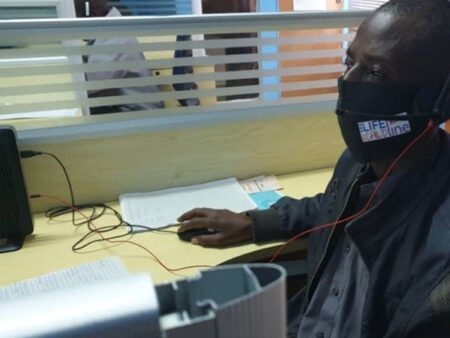

Videre works to equip local activists in conflict zones with the technology and training to capture compelling visual evidence of

Noora Health’s Care Companion Program (CCP) trains nurses to deliver actionable health information to the families of hospital patients on
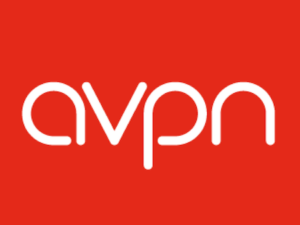
AVPN, the largest social investor network in Asia, is an ecosystem builder and convener, bringing together funders to increase the
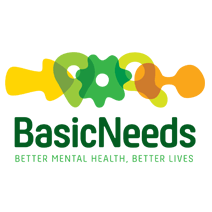
BasicNeeds seeks to enable people with mental illness or epilepsy and their families to live and work successfully in their

Ceres works with capital market leaders to integrate sustainability and climate risks into the perspectives of companies, investors, and policymakers.
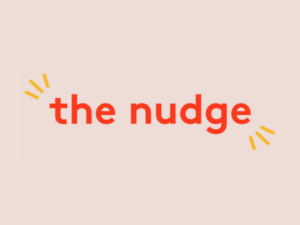
The/Nudge supports organizations that scale social innovations to reduce poverty in India.